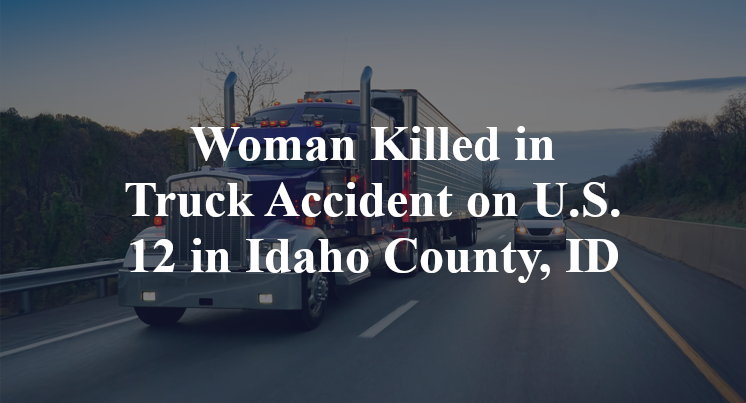Woman Killed in Truck Accident on U.S. 12 in Idaho County, ID
Idaho County, ID — May 3, 2025, a woman was killed following a truck accident that occurred just before 12:00 noon along U.S. Highway 12.
According to authorities, a 59-year-old man and a 54-year-old woman from Middleton were traveling in a westbound Hyundai Palisade on U.S. 12 in the vicinity west of Lochsa Lodge when the accident took place.

Officials indicate that, for as yet unknown reasons, an eastbound International box truck failed to safely navigate a right-hand curve in the roadway. It consequently veered left of center and collided with the oncoming Hyundai.
The woman from the Palisade reportedly suffered fatal injuries due to the wreck and was declared deceased at the scene. Additional details pertaining to this incident—including the identity of the victim—are not available at this point in time. The investigation is currently ongoing.
Commentary
Crashes on mountain highways often come down to one factor: whether the driver was equipped to handle the road. When a commercial box truck fails to stay in its lane on a curve and crosses into oncoming traffic, that’s not just a simple driving mistake—it raises serious legal questions about the driver's training, the truck's condition, and whether the company that put that driver on the road took safety seriously.
I’ve handled plenty of cases where a commercial driver lost control on a curve, and one thing that often gets overlooked is whether the driver even had the experience to handle the route. Sharp curves on narrow roads—especially in rural areas—demand a higher level of skill than many people realize. Did the driver know the terrain? Had they driven that stretch before? Were they going too fast for the conditions? These are questions investigators should be asking right away.
Then there’s the truck itself. Was the vehicle properly loaded? A box truck with a high center of gravity can be harder to control, especially if the cargo inside shifts unexpectedly during a turn. If the truck wasn’t balanced correctly—or if the load wasn’t properly secured—that could have made it much more difficult to stay in the lane on a sharp curve. And that kind of issue isn’t just the driver’s fault. The company responsible for loading or maintaining the truck can also bear responsibility if they failed to follow safety procedures.
Finally, we have to look at whether the driver was being pushed to stay on schedule. In some operations, drivers are given routes and deadlines that make it almost impossible to drive safely. If the person behind the wheel was hurrying through a dangerous area to avoid being late, that’s not just poor judgment—it’s a symptom of a company putting delivery speed ahead of public safety.
Getting to the bottom of a crash like this means asking the right questions and refusing to stop at surface-level explanations. Serious wrecks deserve serious investigation, not assumptions. Understanding how the truck was being operated, how it was loaded, and whether the driver was truly prepared for that road is crucial to finding out what really happened. Getting clear answers to these questions is the least that can be done to help those affected find the clarity and closure they deserve.

“These are essential reads for anyone dealing with the aftermath of a truck wreck”– Attorney Cory Carlson